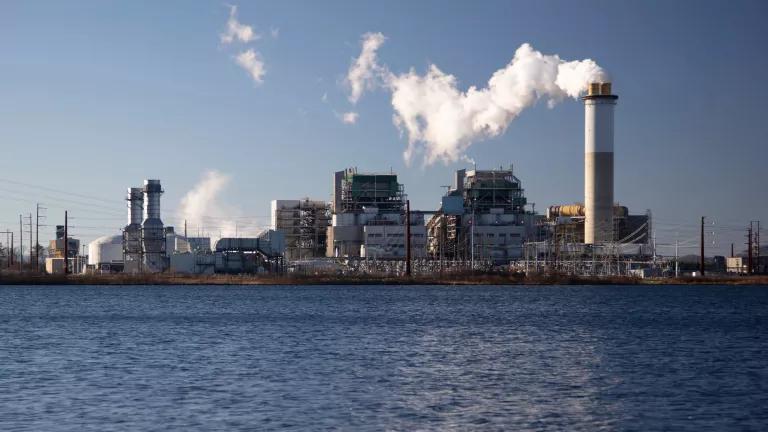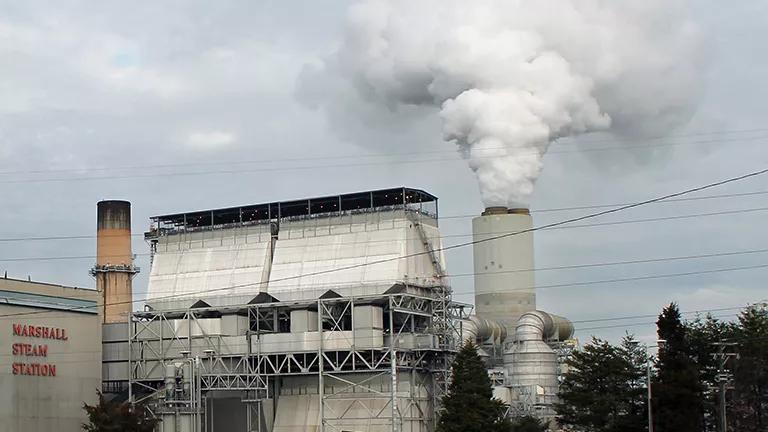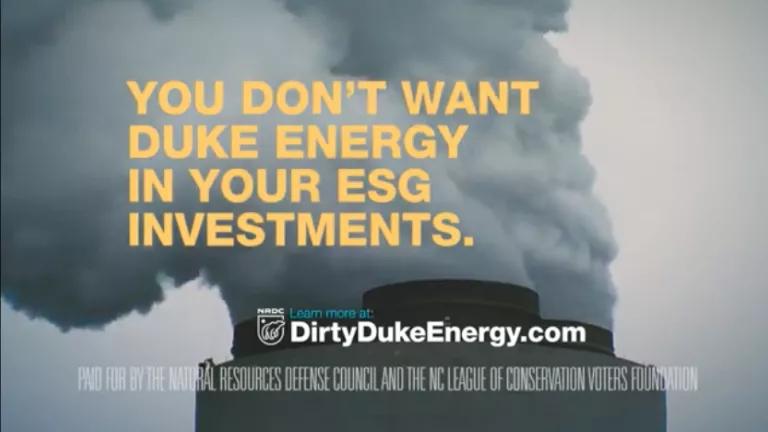North Carolina’s First Carbon Plan is a Dud—What Now?
The North Carolina Utilities Commission tries to make a decision without making any decisions in its new North Carolina Carbon Plan.

Duke Energy's coal-fired Asheville Combined Cycle Plant in North Carolina
Jeffery Edwards/Shutterstock
In the early evening of December 30, 2022, the North Carolina Utilities Commission (NCUC) released its North Carolina Carbon Plan, which should, in theory, be designed to help bring the state into a stronger clean energy future over the next two years. If you’re like most North Carolinians, even those who were closely tracking this effort, you probably didn’t hear much about it until some point in the new year.
This initial North Carolina Carbon Plan is the culmination of a body of work that stretches all the way back to Governor Roy Cooper’s Executive Order 80, issued in October 2018, which called for a 70 percent reduction in electric sector greenhouse gas emissions from 2005 levels by the year 2030. Sadly, the plan is a disappointment that will fail to deliver the results that North Carolina deserves.
So what does the North Carolina Carbon Plan call for?
Strangely, it seems like we’re back to an all-of-the-above energy policy, or the “strategy” of not making choices between better or worse energy sources. The NCUC lists a number of actions, including:
- Procuring 2,350 megawatts (MW) of new solar generation to be put into service by 2028;
- Procuring 1,000 MW of stand-alone battery storage and 600 MW of battery storage with solar generation;
- Upgrading its transmission facilities to interconnect new solar generation;
- Retiring its remaining coal-fired generation (9,000 MW) by 2035;
- Developing pump-storage hydropower in Oconee County, South Carolina;
- Studying and considering the acquisition and development of offshore wind leases off the coast of North Carolina;
- Extending licenses for its existing nuclear fleet and exploring development of new nuclear generation;
- Modeling onshore wind development;
- Planning for the addition of combustion turbine and combined-cycle, gas-fired generation while addressing concerns about the availability of firm transmission capacity;
- Planning for 1 percent load reduction through energy efficiency and demand-side management while setting an “aspirational” 1.5 percent target;
- And finally, developing plans for engaging low-income, minority, and rural communities.
As a part of a broad coalition of energy advocates, we see these next two years as a crucial opportunity to get North Carolina headed decisively toward meeting its climate and clean energy commitments, particularly by meeting Governor Cooper’s 2030 goals. Our groups were calling for the commission to commit the state to a "no regrets" plan that deployed cost-effective resources and set the stage for the next two-year plan, as well as all subsequent plans approved by the commission.
Primarily, in terms of supply changes, we called for a significant increase in the deployment of solar energy and battery storage (about 4 gigawatts of each) with the understanding that, regardless of how much we procured, the state would ultimately need more of these resources in subsequent years. In terms of demand, we called for a strong bolstering of energy efficiency and distributed energy resources to reduce existing demand by 1.5 percent. These are reasonable and achievable goals, and more important, they would cost-effectively put us on track to meet the 2030 emission targets.
The lack of ambition in the commission’s plan risks not meeting the state targets at a time when leadership and urgency is needed. Additionally, and sadly, all existing and any new fossil fuel infrastructure is bound to become what’s known as a “stranded asset,” where ratepayers are forced to keep paying for the infrastructure long after it is no longer useful or cost-competitive, and it will drain resources away from transitioning to clean energy.
One small piece of good news is that the commission did require that Duke Energy—North Carolina’s biggest energy utility—file an updated carbon plan in the fall of 2023. And we expect that plan to incorporate the impacts from the recent Inflation Reduction Act and the National Renewable Energy Laboratory modeling, both of which should push out the need for any new gas generation into the 2030s. NRDC and our partners intend to do our own analysis this fall to once again show that we can meet our 2030 goals cost-effectively and without any new fossil fuel infrastructure.
However, we also still expect Duke Energy to move forward this fall in filing a Certificate of Public Convenience and Necessity (CPCN) to start building more fossil generation in the state. The current setup for new fossil fuel infrastructure resembles a rigged game where “heads, Duke wins; tails ratepayers lose,” meaning that any new fossil infrastructure—even if completely unneeded—is the responsibility of ratepayers, and Duke Energy will profit either way.
Meanwhile, Duke Energy has also filed a new rate case calling for eye-watering rate increases of around 18 percent in North Carolina over the next three years. Seventy-five percent of the additional revenue is going toward bolstering the existing grid to keep it from failing, even though during the most recent blackouts, the failures were caused by over-reliance on fossil energy. NRDC, along with our partners, has intervened in the rate case and plans to challenge any and all wasteful spending.
We need bold direction. The NCUC had an incredible opportunity to help guide the state toward a vibrant clean energy future for all North Carolinians and has instead chosen to side with Duke Energy—even when just about every other intervenor in the carbon plan called for aggressive solar/battery deployment, scaled-up energy efficiency, and a halt to dirty dead-end fossil investments. We’ll have a chance later this year to revise the energy modeling for the carbon plan, and it should prove that no new fossil resources make financial sense. We hope the NCUC stands up for all customers in the pending rate case and in the upcoming carbon plan review to prevent more Duke Energy boondoggles.




